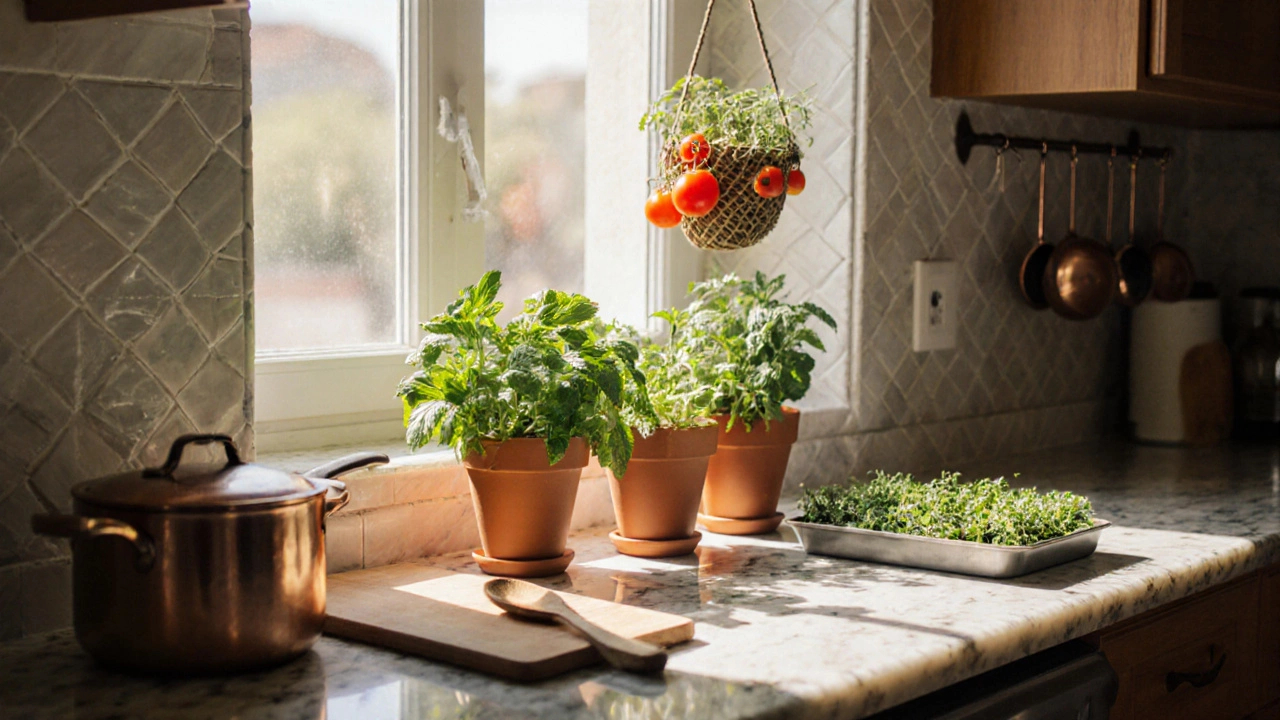Kitchen Garden Plants: Grow Fresh Food at Home
When planning a kitchen garden plants, you’re focusing on edible or aromatic species grown in a small garden close to your cooking area. Also known as herb garden crops, these plants let you snip fresh flavor whenever you need it. They blend well with indoor or balcony spaces, require modest care, and bring a tasty payoff to everyday meals. kitchen garden plants thrive when you match the right species to your space, water schedule, and soil condition.
Container Gardening: Space‑Smart Planting
Container gardening, the practice of growing plants in pots, boxes, or other movable containers is a core technique for many city dwellers. It lets you stack herbs on a windowsill, line a balcony rail with tomatoes, or roll a veggie box to catch the sun. The biggest benefit is flexibility—move a pot if the light shifts or swap out a plant that’s outgrowing its home. Container gardening also simplifies soil management because you control the mix, drainage, and nutrients in each pot. If you pair containers with the right watering routine, you’ll see healthier leaves and fewer root rot problems.
Managing soil moisture, the amount of water held in the growing medium is the next puzzle piece. Too much water drowns roots; too little dries them out, stunting growth. Simple tools like a finger test or a cheap moisture meter can tell you when to water. For container gardens, a rule of thumb is to water when the top inch feels dry. This approach reduces waste, prevents fungal issues, and keeps plants like basil and mint consistently productive.
To make watering efficient, many gardeners turn to irrigation systems, devices such as drip lines or self‑watering pots that deliver water directly to the root zone. Drip irrigation, for example, releases a slow, steady stream that meets the plant’s needs without oversaturating the soil surface. Installing a basic drip kit on a balcony rail can cut your water use in half while keeping lettuce, chilies, and coriander tender. The system also frees you from daily checks, which is perfect for busy cooks who still want fresh greens on the table.
Finally, thoughtful plant selection, choosing varieties that match your climate, space, and skill level seals the deal. Beginners often start with hardy herbs like mint, parsley, and chives, or quick‑growing greens such as radish and spinach. More adventurous growers might try a compact tomato or a dwarf cucumber, which need a bit more sunlight and support. Understanding the difficulty level helps you avoid frustration; for instance, the notorious Welwitschia mirabilis belongs in a desert research garden, not a kitchen balcony. By focusing on adaptable, low‑maintenance options, you set yourself up for a steady harvest and a satisfying gardening experience.
Armed with these basics—container setups, moisture checks, smart irrigation, and the right plant picks—you’re ready to explore the full list of articles below. Each post dives deeper into one of these topics, giving you actionable steps to turn your kitchen garden into a fresh‑food powerhouse.
Top Kitchen Garden Plants for Fresh Flavors All Year Round
Discover the best herbs, greens, and compact fruits for a thriving kitchen garden. Get planting tips, care guides, and a handy comparison table for every small space.
- manufacturing
- India
- food processing
- garden tips
- rice cultivation
- government schemes
- balcony garden
- urban gardening
- balcony gardening
- profitable business
- business ideas
- plastic manufacturing
- drip irrigation
- plant care
- steel manufacturing
- sustainable gardening
- startup ideas
- steel industry
- flower gardening
- textile manufacturers






